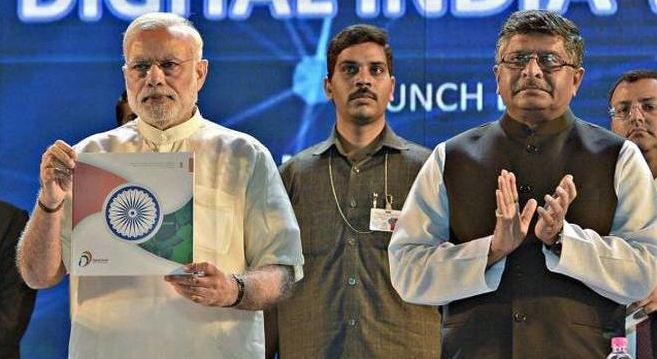On 15 August 2020, from the ramparts of the Red Fort, Prime Minister Narendra Modi made an ambitious promise of connecting 6 lakh villages across the country with broadband services in 1,000 days. Fast forward 10 months and the work has already begun on that promise. Reportedly, the Modi government on Wednesday (June 30) approved a public-private partnership model for the rollout of the BharatNet project which aims to connect 3,60,000 villages (spread across 16 states) through optic fibre for providing broadband services.
In the first phase, 16 states viz. Kerala, Karnataka, Rajasthan, Himachal Pradesh, Punjab, Haryana, Uttar Pradesh, Madhya Pradesh, West Bengal, Assam, Meghalaya, Manipur, Mizoram, Tripura, Nagaland and Arunachal Pradesh have been chosen for the project. The centre will provide Viability Gap Funding (VGF) of Rs 19,041 crores.
In a press conference, Telecom Minister Ravi Shankar Prasad announced the first phase of the BharatNet project and also enumerated the total expense of the program.
“The Cabinet has in-principle approved implementation of BharatNet in 16 states in a public-private partnership model with total expense of Rs 29,430 crores. The government of India will only spend the viability gap fund of Rs 19,041 crores,” said the Union Minister.
Prasad added that the programme has been divided into nine packages, spread across various aspects of the project and no one company will be allowed to have more than four packages. The following arrangement has been done so to ensure there is no monopoly risk. The Private Sector Partner is expected to bring an equity investment and raise resources towards capital expenditure and for operation and maintenance of the network.
It is imperative to note that such a grant under VGF is provided as a capital subsidy to attract the private sector players to participate in Public-Private Property (PPP) projects. This also means that the government will provide funding support for any part of the project, if and when needed.
During his Independence Day speech, PM Modi had highlighted that technology will play a big role in developing the country and digitally connecting every citizen. He had remarked that in the upcoming 1000 days nearly 6 lakh Indian villages will be connected with optical fibre. “This goal will be met in the coming thousand days. In the coming 1000 days, every village in the country will be connected with optical fibre,” he had said.
Before the NDA government came to power in 2014, only 5 dozen panchayats in the country were connected with optical fibre. However, in the last five years, 1.5 lakh gram panchayats in the country have been connected with optical fibre.
PM Modi’s several landmark schemes such as Jan Dhan Yojana (PMJDY), Direct Benefit Transfer (DBT) work in tandem and employ the use of technology to provide benefits, directly to the public. In what comes as a testament to PM Modi’s ambition of creating a Digital India, the country in the year 2020 recorded 25.5 billion real-time payments transactions which dwarfs a much technologically advanced China’s 15.7 billion real-time payments transactions. With the villages set to join the Digital India campaign, these figures are only expected to skyrocket.






























